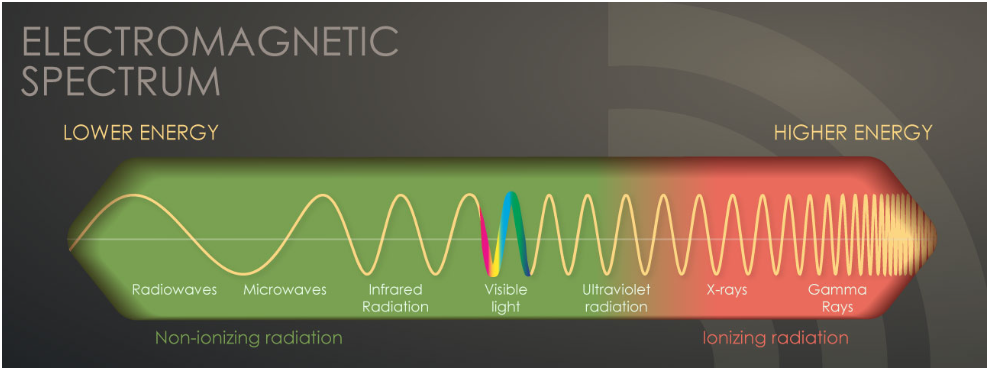Other explanations of "ionising radiations" from the internet
Ionising radiations occurs as either electromagnetic rays (such as X-rays and gamma rays) or particles (such as alpha and beta particles). It occurs naturally (eg radon gas) but can also be produced artificially. https://www.hse.gov.uk/radiation/ionising/.
Ionizing radiation (ionising radiation) consists of subatomic particles or electromagnetic waves that have sufficient energy to ionize atoms or molecules by detaching electrons from them. The particles generally travel at a speed that is greater than 1% of that of light, and the electromagnetic waves are on the high-energy portion of the electromagnetic spectrum. https://en.wikipedia.org/wiki/Ionizing_radiation.
Ionizing radiation is a form of energy that acts by removing electrons from atoms and molecules of materials that include air, water, and living tissue.
Ionizing radiation can travel unseen and pass through these materials. It is on the right side of the electromagnetic spectrum in the
figure below. https://www.cdc.gov/nceh/radiation/ionizing_radiation.html.

The radiation emitted from unstable nuclei is called ionising radiation because as it passes through matter it can dislodge outer electrons from atoms causing them to become ions. https://www.bbc.co.uk/bitesize/guides/zk4g6v4/revision/2.
flow of energy in the form of atomic and subatomic particles or electromagnetic waves that is capable of freeing electrons from an atom, causing the atom to become charged (or ionized). https://www.britannica.com/science/ionizing-radiation.
“ionising radiation” means the transfer of energy in the form of particles or electromagnetic waves of a wavelength of 100 nanometres or less or a frequency of 3 x 1015 hertz or more capable of producing ions directly or indirectly; https://www.legislation.gov.uk/uksi/2017/1075/regulation/2/made
Everything in the world is composed of elements, (remember the periodic table?) which in turn are made of atoms. Some of these atoms are unstable and decay, or break apart. When this happens, they emit what we call “radiation” that can take the form of subatomic particles such as electrons, alpha particles and neutrons, or electromagnetic waves known as gamma rays. All of these carry energy and are capable of breaking down, or “ionizing,” molecules they encounter. "https://www.mcgill.ca/oss/article/you-asked/it-true-banana-radioactive.